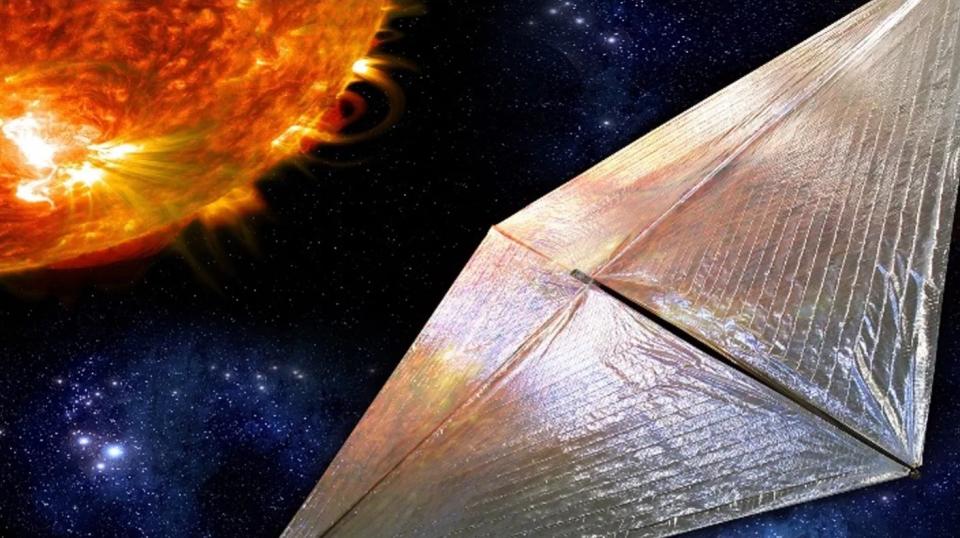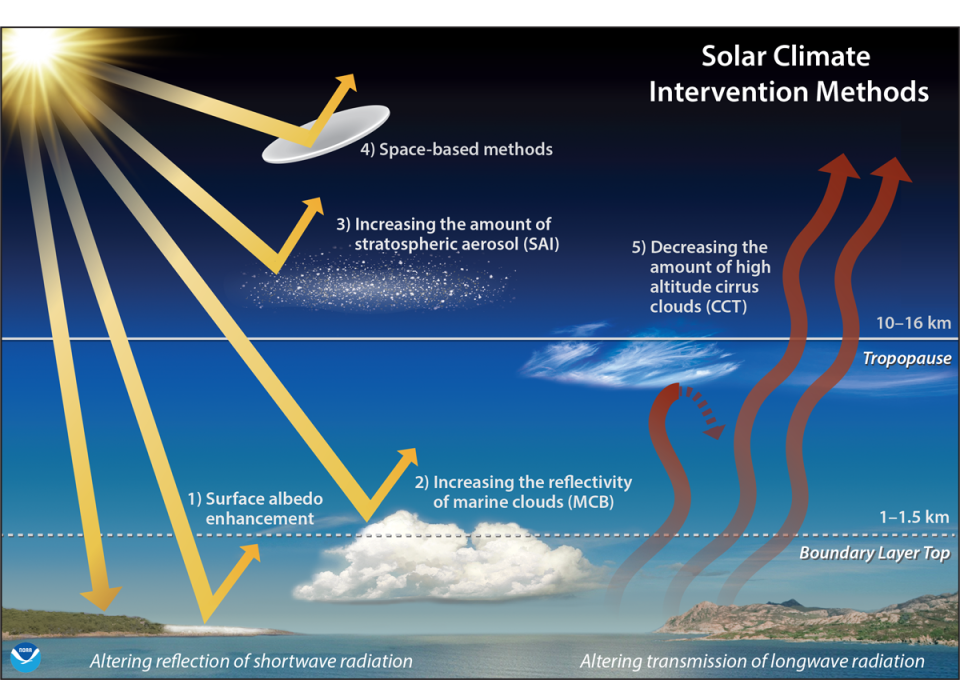A group has been formed to study and promote a space umbrella to help defend against global climate change.
The idea has been debated for years, but the Planetary Sunshade Foundation is preparing papers that support the concept and highlight the practicality of the approach.
A planetary sunshade, the Foundation advises, could be the best solution for solar radiation management and should be seen as a key part of global efforts to counter ongoing climate change on Earth.
Related: Experts are sure that 2023 will be “the warmest year in history”
A question of degrees
Undoing the worst effects of climate change may well depend on three pillars: emissions reduction, carbon dioxide removal and solar radiation management.
There is international agreement to strive to prevent the global average temperature from rising more than 1.5 degrees Celsius (2.7 degrees Fahrenheit) above current averages. But the harsh reality is that the smaller the average temperature increase, the smaller the climate impacts.
That said, climate change researchers have reported that our planet could well exceed 1.5°C in the next decade. Meanwhile, there are increasing incidents of extreme weather, rising sea levels, widespread fires and melting ice caps.
Added to these warning signs is political pressure to counteract the calamity of climate change.
habitable planet
Morgan Goodwin is the executive director of the Planetary Sunshade Foundation.
As for why the group is pushing the initiative, Goodwin is clear that current decarbonization strategies are necessary, but insufficient for a habitable planet.
Decarbonization is the reduction of carbon dioxide emissions by using low-carbon energy sources to achieve reduced production of greenhouse gases that permeate the Earth’s atmosphere.
“To avoid the worst impacts of climate change, the world should quickly phase out fossil fuel use, remove gigatonnes of carbon from the atmosphere, and limit incoming solar radiation,” Goodwin told Space.com. Of all the proposed methods to reduce solar radiation, he said, the sunshade has many advantages that are worth investing in the concept.

Construction strategies
Considered a “megastructure” in space, an umbrella would be installed at the Sun-Earth Lagrange-1 point. Once installed, it could reduce radiative forcing (the retention of heat in the atmosphere due to greenhouse gas emissions) by reflecting sunlight back into space.
The foundation says the construction of a planetary sunshade is possible, taking advantage of the initial solar sail technology that has already been used. “The rapid technological progress of space launch systems has caused the cost of sending materials and people to space to fall rapidly, changing the scope of what is possible.”
According to the foundation, there are two possible umbrella construction strategies.
“We are pursuing both options and think that if a planetary umbrella is built, the initial phases of construction will be an architecture launched to Earth, while later phases will use space resources and in-space construction,” the group’s website explains.


Doesn’t Mother Nature intervene?
But there are those who cling to the belief: “Mother Nature is not to be trifled with!”
Goodwin responds by pointing out that humans are messing with Mother Nature on a large scale through state-approved and often subsidized industrial practices.
“Our survival as a civilization depends on our ability to wisely and intentionally change the way we interact with our planet,” Goodwin said.
In fact, last year, the White House released a congressionally mandated report on geoengineering governance pathways, Goodwin said, a document that marks “a small but solid step forward,” he added, to create a framework for greater investment in geoengineering research.


Report conclusions
In June of this year, the White House Office of Science and Technology Policy published the report ordered by Congress on the modification of solar radiation.
Regarding the report’s conclusions, it warns that any possible comprehensive research program must cover both the social and scientific dimensions of the modification of solar radiation.
The paper highlights several key priority areas for future solar radiation modification research, including determining the climate and environmental impacts of solar radiation modification deployment; evaluate possible social outcomes and ecological consequences; and the need to examine how cooperative research could be conducted between international partners.
That report also recognizes that research into the impacts of solar radiation modification to date has been ad hoc and fragmented, rather than the product of a comprehensive strategy. As a result, significant knowledge gaps and uncertainties exist in many critical areas.
Uncertainties, risks, challenges
Earlier this year, the Global Commission on Governing the Risks of Climate Overshoot (the “Climate Overshoot Commission”) released its report.
This independent group of world leaders recommended a strategy to reduce the risks if global warming targets are exceeded, i.e. a “climate overshoot” crossing the 1.5°C threshold.
In the commission’s report, they addressed space reflectors; stratospheric aerosol injection, cirrus cloud thinning, and marine cloud thinning – all solar radiation modification (SRM) techniques.
“But SRM would counter climate change imperfectly and raises serious uncertainties, risks and governance challenges,” the commission study reported.
RELATED STORIES:
— NASA confirms that the summer of 2023 was the hottest on record on Earth
— Climate change has pushed Earth into ‘unexplored territory’: report
— NASA’s new ‘Greenhouse Gas Center’ tracks humanity’s contribution to climate change
“The governance gaps for the GRS are the most acute,” the report said. “How can it be researched and evaluated without distracting attention from essential reductions in greenhouse gas emissions? Who decides whether SRM is undertaken and under what conditions? How could differences between countries on this issue be resolved? ?”
Goodwin of the Planetary Sunshade Foundation concludes that this year will close as the hottest year on record, replacing 2022, which in turn took that title from 2021. “As the rate and impacts of warming increase, “They will bring more and more tactics and perspectives to the table.”
Whether a “shade-made” sail that deflects the sun is still a bright prospect on that discussion table remains to be determined.